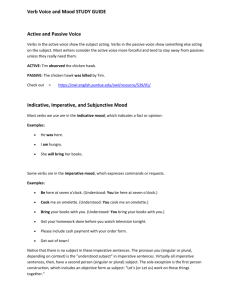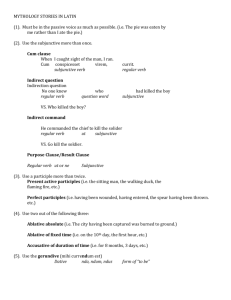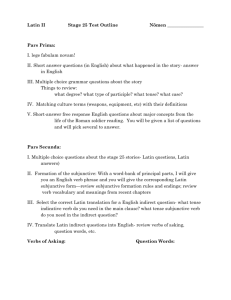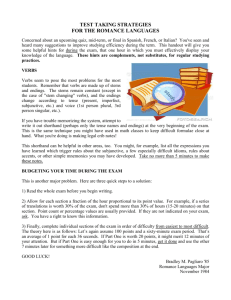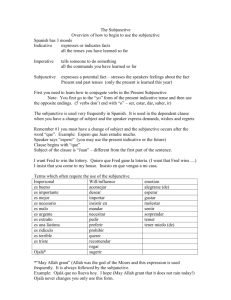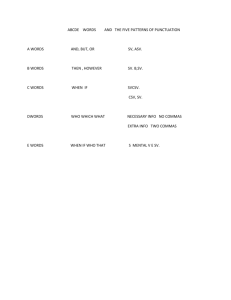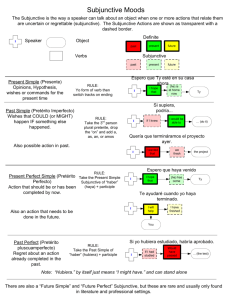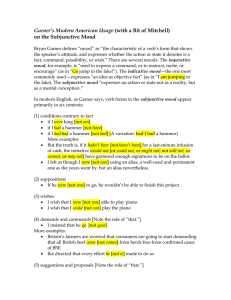mood
advertisement
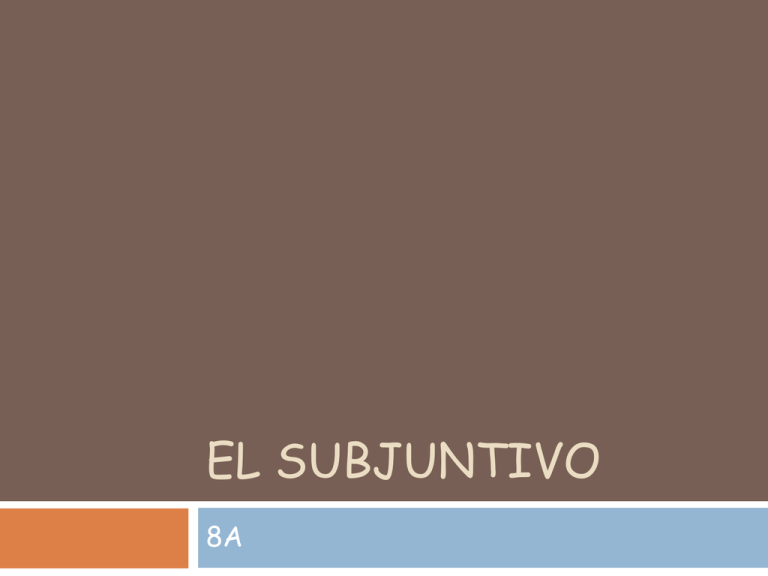
EL SUBJUNTIVO 8A Verbs show the action and they also show a tense and a mood. The tense tells you the time of the action Present, preterit, future, etc are tenses. The mood tells the speaker’s attitude towards the action. Indicative, commands and the subjunctive are moods. INDICATIVE You are late. I am sick. Juan studies VS SUBJUNCTIVE It is important that you be on time. I wish I were not sick. The teacher insists that he study. What is the “subjunctive”? The present subjunctive is a “mood” in Spanish. It is used to express uncertainty, doubt, emotional reaction, or future actions. The subjunctive conjugation of a verb is usually used in the second part of a sentence. For example, I may say, “I want you to study.” You may or may not do it, so the word “to study” would be conjugated in the present subjunctive. Setup Words These words, used in the first clause of a sentence, set up the use of the subjunctive in the second clause. What is said after these words may or may not happen, so the conjugation of the second verb is not the present tense as you know it. querer (ie) = to want sugerir (ie) = to suggest recomendar (ie) = to recommend insistir en = to insist esperar = to hope ojalá que = hopefully / it’s hopeful Subjunctive in Context To set up the subjunctive there are three things that must be in the sentence. 1. One of the setup words 2. The word “que” 3. A verb that shows a subject change Notice that the SUBJUNCTIVE MOOD consists of two clauses, joined together by “que” : It is bad that we can’t go. -Es horrible que no podamos ir. that she is wearing that dress. -Es escandaloso que ella lleve ese vestido. It bothers me that he can’t come. -Me molesta que él no pueda venir It’s scandalous Forming the Subjunctive In order to conjugate a verb in the present subjunctive, you have to know well the conjugations of the present indicative (the present tense that you already know). 1. First: hablo 2. Next: habl_ 3. Last: endings, hable Put the verb in the “yo” form of the present tense. como vivo Drop the ‘o’ com_ viv_ Add an opposite ending. This means for -ar verbs, use -er and for -er/-ir verbs, use -ar endings. coma viva Subjunctive Endings A. Rewrite the following verbs in the subjunctive. Yo 1. 2. 3. 4. 5. Tú él Nosotros Ellos Hablar ____ ____ ____ ____ ____ Comer ____ ____ ____ ____ ____ Dormir ____ ____ ____ ____ ____ (o-ue) Leer ____ ____ ____ ____ ____ Pensar ____ ____ ____ ____ ____ (e-ie) B. Traduzca al español. 1. 2. 3. 4. 5. I recommend that you have your passport. We suggest that they (boys) drink their water before (antes de …) boarding. I want that you talk to the travel agent tomorrow. You prefer that the plane leaves early. The pilot wants that the passengers listen.
